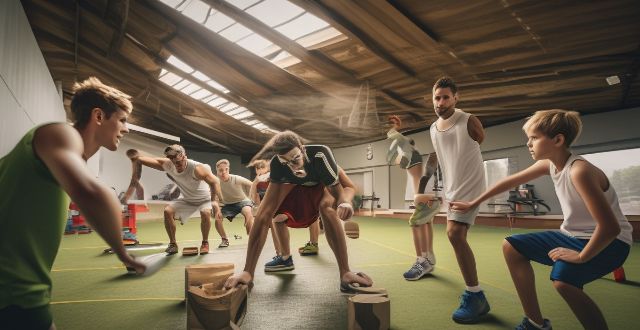Sports biomechanics plays a crucial role in addressing the unique challenges faced by athletes with disabilities. It helps optimize their performance, enhance their training, and improve their overall well-being through customized equipment design, gait analysis and rehabilitation, sport-specific technique optimization, inclusive sports development, and education and advocacy efforts.

How Sports Biomechanics Addresses the Unique Challenges Faced by Athletes with Disabilities
Sports biomechanics is a field that applies the principles of mechanics to the study of human movement in sports and athletic activities. It plays a crucial role in addressing the unique challenges faced by athletes with disabilities, as it helps them optimize their performance, enhance their training, and improve their overall well-being. Here's how:
1. Customized Equipment Design
One of the primary ways sports biomechanics addresses the needs of athletes with disabilities is through the design and customization of equipment. This includes wheelchairs for wheelchair basketball or racing, prosthetic limbs for running or cycling, and other assistive devices. By understanding the biomechanics of an athlete's specific disability, designers can create equipment that maximizes efficiency, comfort, and performance.
Key Points:
- Ergonomic Design: Ensures that equipment fits the athlete's body and provides optimal support.
- Material Innovation: Uses materials that are lightweight yet strong, reducing strain on the athlete.
- Performance Optimization: Equipment is designed to enhance speed, agility, and stability.
2. Gait Analysis and Rehabilitation
For athletes with mobility impairments, sports biomechanics can help analyze their gait (way of walking or moving) and suggest improvements. This analysis can lead to personalized rehabilitation programs aimed at improving balance, coordination, and strength.
Key Points:
- Motion Capture: Technology used to capture and analyze the athlete's movement patterns.
- Individualized Training: Tailored exercises to address specific weaknesses and enhance performance.
- Injury Prevention: Identifying potential areas of overuse or strain to prevent injuries.
3. Sport-Specific Technique Optimization
Sports biomechanists work closely with athletes to refine their techniques based on their unique abilities and limitations. This involves analyzing the forces involved in a particular sport and adapting techniques to maximize efficiency and reduce strain.
Key Points:
- Force Analysis: Measuring the forces exerted during different sporting activities.
- Technique Modification: Adapting techniques to suit the athlete's physical capabilities.
- Performance Enhancement: Improving speed, power, and accuracy in sports movements.
4. Inclusive Sports Development
Sports biomechanics also plays a role in developing inclusive sports, where athletes with disabilities can compete alongside able-bodied athletes. This involves creating fair rules, modifying existing sports, or even developing new sports that cater to a wide range of abilities.
Key Points:
- Rule Adaptation: Ensuring that rules do not disadvantage athletes with disabilities.
- Sport Modification: Altering traditional sports to make them more accessible.
- New Sport Creation: Designing entirely new sports that are inclusive by nature.
5. Education and Advocacy
Finally, sports biomechanists often engage in educational and advocacy efforts to raise awareness about the potential of athletes with disabilities. They work to dispel myths, promote equality, and encourage more inclusive practices in sports organizations.
Key Points:
- Awareness Raising: Educating the public about the capabilities of athletes with disabilities.
- Policy Influence: Advocating for policies that support inclusivity in sports.
- Accessibility Promotion: Ensuring that sports facilities and events are accessible to all athletes.
In conclusion, sports biomechanics offers a range of solutions to address the unique challenges faced by athletes with disabilities. From customized equipment design to inclusive sports development, this field is instrumental in enhancing performance, promoting equality, and ensuring that all athletes have the opportunity to reach their full potential.